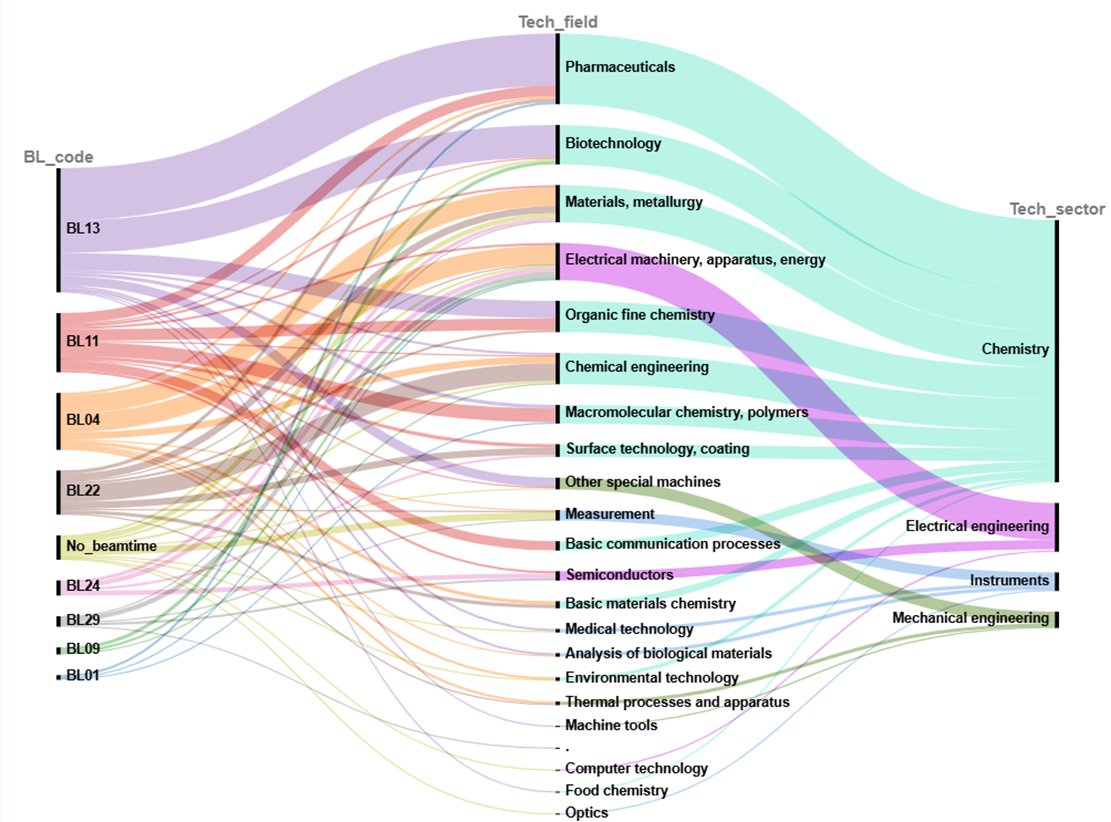ALBA Synchrotron

A study conducted by the Italian institute CSIL Milano, specialised in applied economic research, has identified the patents citing ALBA Synchrotron open access publications. The results proved a growing impact of ALBA’s research on innovation and knowledge transfer, with emphasis in the pharmaceutical, biotechnology materials and metallurgy sectors.
The ALBA Synchrotron is a large research infrastructure devoted to exploit synchrotron light for scientific and industrial applications. ALBA provides access to public researchers based on competitive calls, resulting in publications; and private access for industry whose results may remain confidential. The knowledge generated does benefit society in a wide range of fields, from medicine and energy to materials science and engineering.
Measuring the impact of the public research can be done by analyzing how often it is cited in patents, which serve as bridges between fundamental research and technological development. The number and significance of these patents offer valuable insight into the real-world influence of ALBA's scientific output.
In this context, ALBA Synchrotron explores the innovation pathways generated from its research in collaboration with CSIL given as result the Patent Analysis Study. This report includes: direct patent citations - where patents reference ALBA publications explicitly – and indirect citations - where patents cite research that itself references ALBA publications-. To conduct the analysis, CSIL combined data from ALBA's publications repository (3.394 at the time of the analysis) with information from the Lens and Orbis IP databases, applying a rigorous methodological framework.
Results show that 395 patents directly cite publications including results obtained at the ALBA Synchrotron. Including indirect citations and in-text mention, the total number reaches the impressive amount of 4,578 patents. Rounding numbers, we can say that, after one decade of operation, there are patents accounting to more than 10% of the number of publications, which directly cite ALBA experimental results, and 135% with indirect and in-text citations.
Back in 2020, CSIL carried out a previous study, and in that moment, when publications were 1.723, there were only 2% with direct citing and 22% with indirect and in-text citing. This proves the remarkable progress of ALBA's impact on innovation and suggests that the same analysis done in few years from now will provide even higher impact.
The majority of the patent applicants are educational organizations (37%) which can be transferred to industry and companies (34%) which can exploit them directly. The appearance of the patent occurs in a time range from 2 to 9 years from the publication. The total estimated value of these patents is 389 M€ based on the value per patent provided by the European Bank of Investments.
ALBA's impact is particularly strong in the pharmaceuticals, biotechnology, materials, and metallurgy sectors, in full alignment with ALBA's strategic scientific areas: healthcare, climate change and information and communication technologies. It is worth-mentioning that 32% of ALBA publications cited in patents are linked to protein crystallography research area, a field critical to drug development and molecular biology.
These findings highlight the socioeconomic value of synchrotron facilities like ALBA, which play a pivotal role in transforming scientific excellence into real-world technological and industrial advancements.